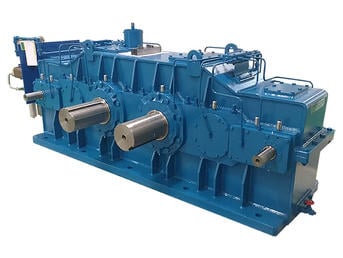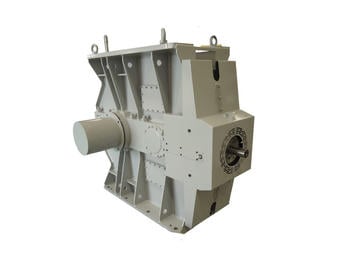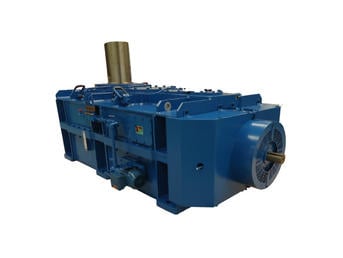Special Paramax: Drop-In Reducers
Paramax Special Gearboxes:
- Customizable
- Interchangeable ("Drop-in")
- Engineering Excellence
- Premium Performance
- Worldwide Support
| Mounting Options : | Horizontal, Vertical and Upright mounting |
| Ratio Range: | 1: 1,25 - 1:630 |
| Shaft Arrangement: | Paralell, Right-Angle |
| Power Range: | 3,7 - 3.729 kW |
| Torque Range: | 2.600 - 740.000 Nm |
What are service factors and how are they used?
In general, reducers and gearmotors are rated for specific conditions and operating requirements of the application by the use of AGMA-defined Service Factors. There are three AGMA load classifications for reducers: uniform (U), moderate shock (M) and heavy shock (H), and three AGMA load classifications for gearmotors: I, II, and III. Refer to our catalog for a list of AGMA load classifications. These Service Factors are used in the product selection process to adjust for the specific conditions and operating requirements of your application.
How can I be sure that a Paramax is right for my application?
Please consult a Sumitomo Sales Representative. They will review your application and provide an optimum Paramax selection.
What are backstops?
Backstops are safety devices and have to be inspected at regular time intervals. The periodical inspection is to be carried out by authorized personnel. The frequency of the inspection depends on the type of application. Please refer to the P4 service manual for recommended inspection intervals
What do I do if my application has particularly severe operating conditions?
The standard ratings for Cyclo® HBB are based on 10-hour daily service under conditions of uniform loads (equivalent to AGMA service factor 1.0). By following the product selection process outlined in our catalog, you will determine and apply the Service Factors to compensate for severe operating conditions.
What information do I need to get started in the selection process?
To select the proper reducer for your application, you will need to know:Application: type of driven machine
Hours of operation per day
Motor horsepower (HP) and speed (RPM)
Loading Conditions
Mounting Position
Ambient environment (altitude, dusty, chemical, explosive, water)
Ambient temperature and humidity
You must also note any special environmental factors or operation requirements. This information will be important in determining your application's service factor.
Clone of How often do I change the oil?
The first oil change should be carried out preferably after 100 hours and not more than 800 hours of operation. The removed oil may be used again after filtering. Filter the oil volume at least 10 times using a 10mm filter or smaller. Subsequently the oil should be renewed after 4000 to 8000 hours or maximum of 18 months of operation depending on working conditions. Please refer to service manual for detailed oil change instructions.
What type of lubrication method does the P4 use?
Hansen P4 units use one of the following systems:
- Splash Lubrication (standard with horizontal shaft gear units for speeds between 750 and 1800RPM at the high speed shaft. Gears and output shaft bearings are lubricated by immersion in the oil bath. Oil splash from gears fill the oil pockets in the housing, assuring gravity circulation lubrication of the bearings via channels in the housing and covers.)
- Force Feed Lubrication (all rotating elements above oil bath level are lubricated by a gear pump forcing the oil through pressure lines. Forced feed lubrication is available as circulation lubrication or pressure lubrication.
How do I select a Cyclo® BBB5 reducer or gearmotor?
Visit our Cyclo® BBB5 Product Configurator to find the exact match for your applications.
What are the advantages of the new Steel Taper-Grip® bushing?
With an increased torque capacity, the new Steel Taper-Grip® bushing can be used in reversing and/or high start-up applications. The new Steel Taper-Grip®bushing can be used on all Taper-Grip® products.
What are the advantages of the Taper-Grip® bushing?
The Taper-Grip® bushing is integral to the Cyclo® BBB4 and provides for easy mounting and removal to and from the shaft of the driven machine. Because it requires no key way, the shaft isn’t weakened and maximum torque is transmitted.




